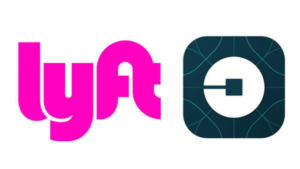Everyone’s big question is why is my insurance policy so high? Lets set the record straight. Here is a little review of why all these factors impact your insurance premium.
Teenage drivers
Teens are 2.5 times more likely to be involved in a crash than 20-24-year-olds, according to the California DMV. This kind of risk results in much higher rates compared to experienced drivers. But it’s not all bad news for teen drivers. Some insurance companies offer a Good Student Discount if the eligible teen driver is added to their parents’ policy as a way to combat the costs of insuring new drivers.

Age
On average, rates decrease (or stabilize) as you get older, until you reach about 75. You can expect the biggest drops at 19, 21, and 25. But remember, it’s not always your actual age, but rather the number of years you’ve been driving that’s the bigger factor.

Vehicle usage
If you use your vehicle mostly for pleasure or commuting, you’ll usually pay less than a driver using their vehicle for other purposes. If you use your vehicle for business or for ridesharing services like Uber and Lyft, some companies may charge you more, or may even require a commercial policy.

Speeding and traffic tickets
If it’s your first speeding ticket in a three-year period, you may not get an increase at all. But, if you get two or more tickets in a three-year period, you’ll likely get an increase. The good news is the increase won’t be permanent, and speeding tickets typically fall off your driving record after a few years.
Those pesky parking tickets are a pain to pay but will never affect your insurance premium!

At-fault accidents
Similar to speeding tickets, most at-fault accidents will raise your rate, but the increase won’t be permanent. At-fault accidents fall off your record after a few years.
Keep in mind, accidents don’t always raise your rate. Some insurance companies offer Accident Forgiveness programs. That means, if you qualify, they won’t raise your rate if you have an accident.
Not-at-fault and one-car accidents
There’s no easy answer here, as this varies by state. In many states, you won’t see an increase at all for a not-at-fault accident. But in other states, your company could increase your rate—so it depends on your state and your insurance company.
One-car accidents are considered at fault by insurance companies because there is no other driver involved.

Location
Your ZIP code is also one of the most important factors in determining how likely you are to have an incident. If you live in a highly populated area, you’re at a higher risk for theft, collisions, and harm to your car. You’re likely to pay more for the comprehensive and collision portion of your auto policy because of those risks.

Coverage selections
Generally speaking, the more coverage you have, the higher the rate. Obviously, the state-minimum plan will always be the most affordable while maxing out your coverages will be the most expensive. The good news is that sometimes you can increase your coverage amounts by thousands, and your rate will only change minimally. Your deductible amount will also impact your rate.
The higher your deductible, the more of the repair or claim cost you’ll have to take on. That means your out-of-pocket costs will be higher, but you’ll have a lower overall rate and vice versa.

If you are making payments on your vehicle, consult with your financer to find out if they require a maximum deductible or certain coverages.
Fun fact:
Engine size
The size of the engine is a factor, because a large, V-8 engine or greater makes it easier to speed or engage in reckless driving, which could mean a higher rate.

























